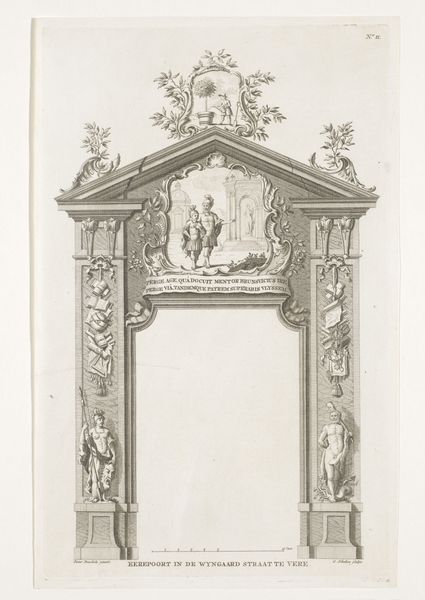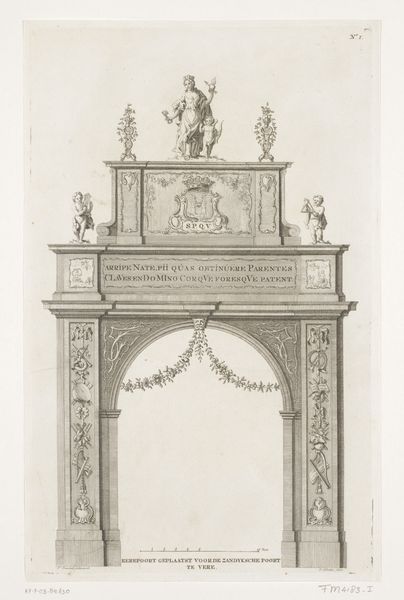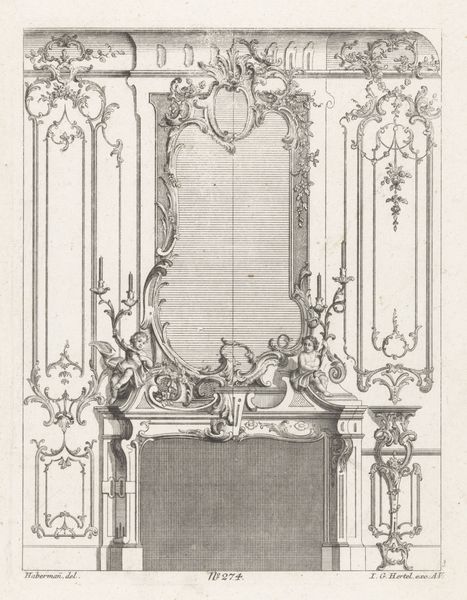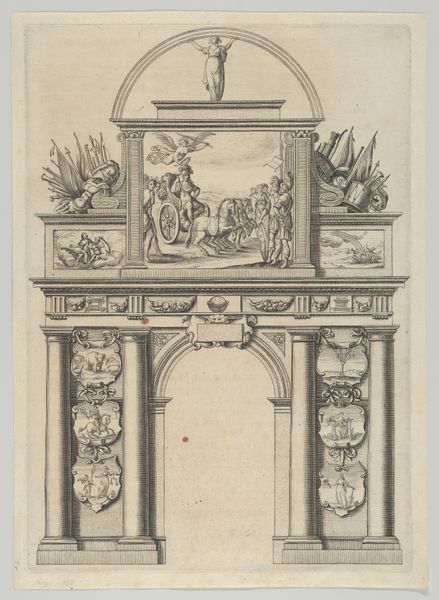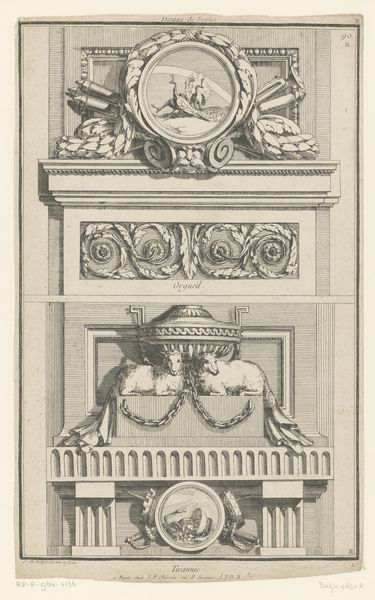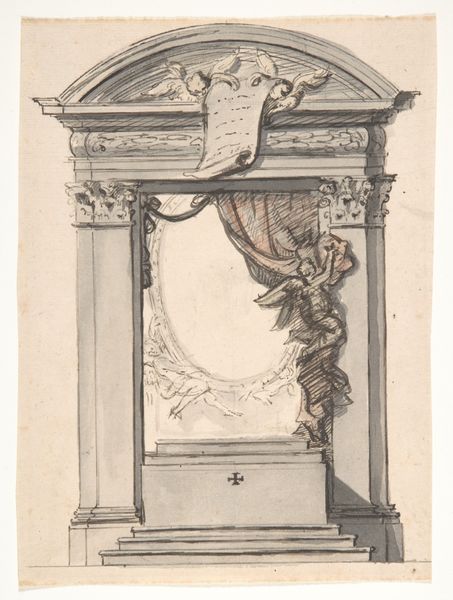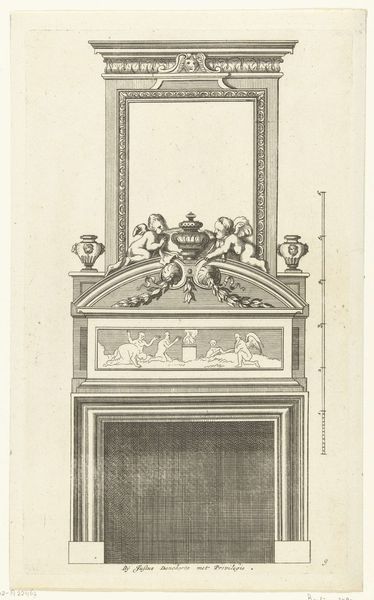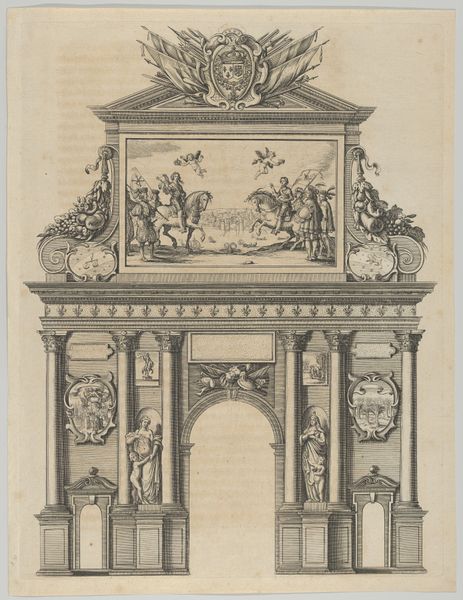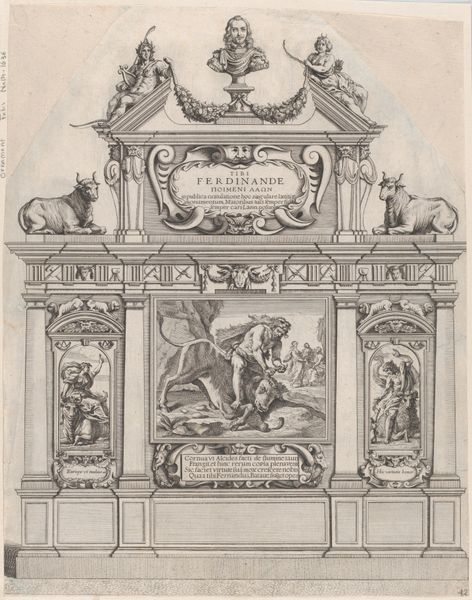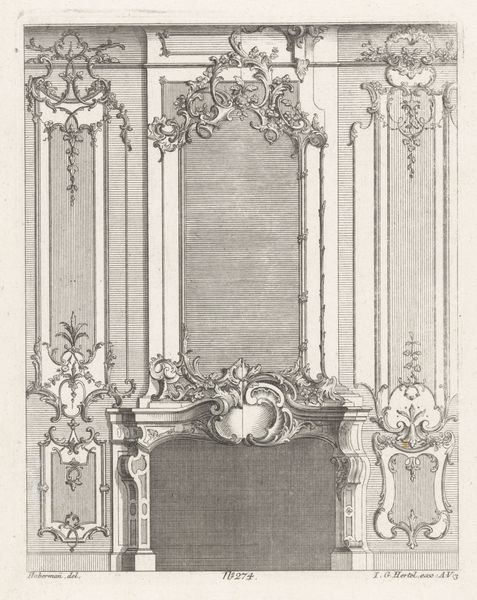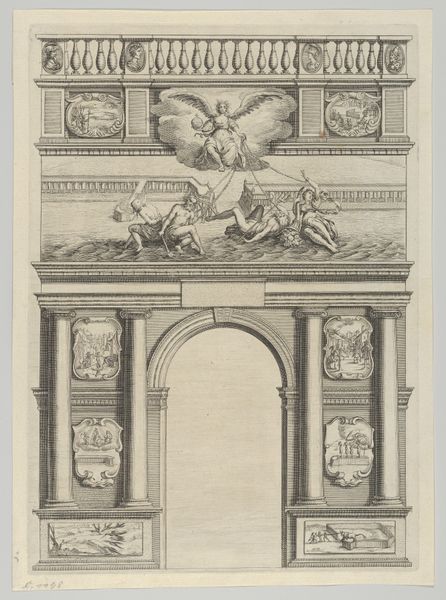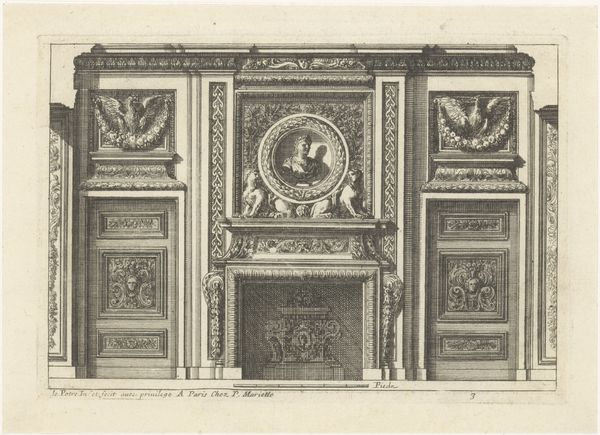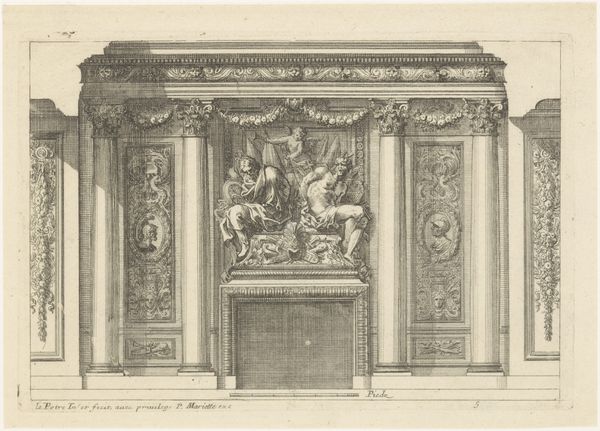
These over logica en moraal van Michel Sublet de Romilly (bovendeel) 1643 - 1688
0:00
0:00
claudemellan
Rijksmuseum
print, engraving
#
baroque
# print
#
form
#
line
#
history-painting
#
engraving
Dimensions: height 439 mm, width 291 mm
Copyright: Rijks Museum: Open Domain
Curator: Here we have Claude Mellan’s “These over logica en moraal van Michel Sublet de Romilly (bovendeel),” dating from 1643 to 1688. It's currently housed right here at the Rijksmuseum. Editor: My first impression is of extraordinary detail. It’s monochromatic and rendered in a sharp, almost architectural style. All those fine lines, etched with such precision, creating a world of subtle shading. It's almost unreal in its intricacy. Curator: Indeed. Mellan was a master of engraving. His work offers a fascinating window into the artistic and intellectual climate of the Baroque period. We are looking at the upper section of a larger print designed to represent Michel Sublet de Romilly's arguments on logic and morality. The title suggests this work straddles two crucial pillars of Baroque thought. Editor: Seeing this kind of detail, I can't help but think about the labor involved. Engraving is such a meticulous craft! I imagine the hours and hours Mellan spent carefully cutting those lines into the metal plate. Curator: Absolutely. Engravings such as these were often commissioned by the wealthy elite, signifying the commissioners as enlightened and cultured patrons. The image of the portrait bust set among allegorical figures conveys ideas about intellectual pursuits and civic virtue—common aspirations of that time. It reveals much about the era’s values and how those values were visually reinforced. Editor: Those allegorical figures, are they referencing classical ideals, or… Curator: Yes, precisely. They echo classical sculpture and were deployed here to imbue this portrait of Michel Sublet de Romilly with gravitas and timelessness, situating him in a continuum of intellectual excellence reaching back to antiquity. Editor: Knowing the laborious nature of its creation gives the print a totally different meaning; not just an image but an object reflecting labor and social positioning. I mean, think about who had access to create and consume prints like these... Curator: Very true. The socio-economic context of its production undeniably affects how we should view it. What seems like a simple image of elevated virtue actually conceals layers of production, patronage, and power. It is crucial to dissect and consider those components. Editor: This engraving makes me think differently about the interplay between technique, symbolism, and social meaning in Baroque art. Curator: For me, it emphasizes the power of prints to disseminate ideas and influence the values of an era.
Comments
No comments
Be the first to comment and join the conversation on the ultimate creative platform.
